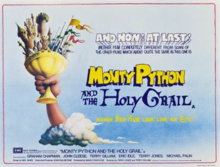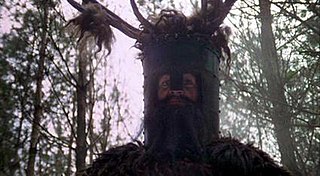
The Knights Who Say "Ni!", also called the Knights of Ni, are a band of knights encountered by King Arthur and his followers in the 1975 film Monty Python and the Holy Grail and the play Spamalot. They demonstrate their power by shouting "Ni!", terrifying the party, whom they refuse to allow passage through their forest unless appeased through the gift of a shrubbery.

Monty Python's Life of Brian is a 1979 British comedy film starring and written by the comedy group Monty Python. It was directed by Jones. The film tells the story of Brian Cohen, a young Jewish-Roman man who is born on the same day as—and next door to—Jesus, and is subsequently mistaken for the Messiah.
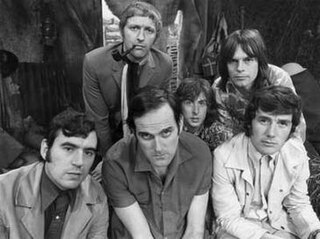
Monty Python were a British comedy troupe formed in 1969 consisting of Graham Chapman, John Cleese, Terry Gilliam, Eric Idle, Terry Jones, and Michael Palin. The group came to prominence for the sketch comedy series Monty Python's Flying Circus, which aired on the BBC from 1969 to 1974. Their work then developed into a larger collection that included live shows, films, albums, books, and musicals; their influence on comedy has been compared to the Beatles' influence on music. Their sketch show has been called "an important moment in the evolution of television comedy".
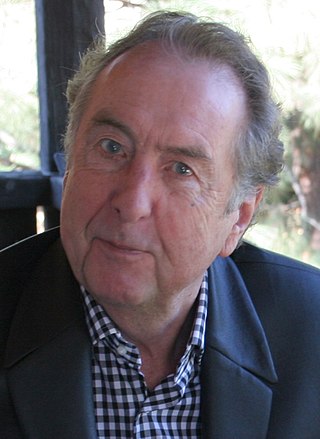
Eric Idle is an English actor, comedian, songwriter, musician, screenwriter and playwright. He was a member of the British comedy group Monty Python and the parody rock band the Rutles. Idle studied at Pembroke College, Cambridge, and joined Cambridge University Footlights. He reached stardom when he co-created and acted in the sketch series Monty Python's Flying Circus (1969–1974) and the films Monty Python and the Holy Grail (1975), Life of Brian (1979) and The Meaning of Life (1983) with John Cleese, Michael Palin, Terry Gilliam, Terry Jones, and Graham Chapman.

The Black Knight is a fictional character who first appeared as a minor antagonist in the 1975 comedy film Monty Python and the Holy Grail by the Monty Python comedy troupe. A knight dressed in black who wears a helmet completely concealing his face, he is based on the black knight of the Arthurian legend. Like most of the characters in Holy Grail, he is played by a member of Monty Python, namely John Cleese, who primarily portrays Lancelot in the film.

And Now for Something Completely Different is a 1971 British sketch comedy film based on the television comedy series Monty Python's Flying Circus featuring sketches from the show's first two series. The title was taken from a catchphrase used in the television show.
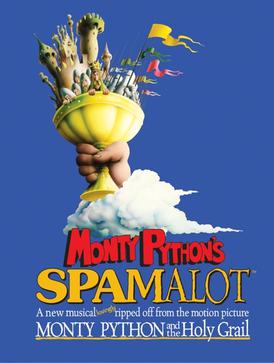
Spamalot is a stage musical with score by John Du Prez and Eric Idle, with lyrics and book by Idle. Based on the 1975 film Monty Python and the Holy Grail, the musical offers a highly irreverent parody of Arthurian legend.

The Fish-Slapping Dance is a comedy sketch written and performed by the Monty Python team. The sketch was originally recorded in 1971 for a pan-European May Day special titled Euroshow 71. In 1972 it was broadcast as part of episode two of series three of Monty Python's Flying Circus, which was titled "Mr & Mrs Brian Norris' Ford Popular".
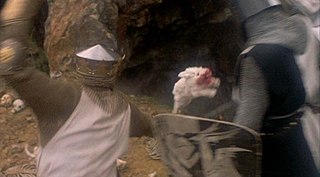
The Killer Rabbit of Caerbannog is a fictional character in the Monty Python film Monty Python and the Holy Grail. The scene in Holy Grail was written by Graham Chapman and John Cleese. The rabbit is the antagonist in a major set piece battle, and makes a similar appearance in Spamalot, a musical inspired by the movie. The iconic status of this scene was important in establishing the viability of the musical.

The Album of the Soundtrack of the Trailer of the Film of Monty Python and the Holy Grail is the first film soundtrack album by Monty Python, released in 1975. It features selected scenes from Monty Python and the Holy Grail interspersed with a large volume of new studio material, much of which centers on a spoof screening of the film at the Classic Silbury Hill Theatre. Also among the new items is the "Marilyn Monroe" sketch, which Graham Chapman co-wrote with Douglas Adams - the pair having recently collaborated on the fourth series of Monty Python.

Monty Python Live at Aspen was a reunion show featuring the surviving members of the Monty Python team: John Cleese, Terry Gilliam, Eric Idle, Terry Jones and Michael Palin, appearing on stage together for the first time since their Hollywood Bowl shows in 1980. Filmed on 7 March 1998 at the Wheeler Opera House in Colorado as part of The US Comedy Arts Festival, it featured the five Pythons in an interview with host Robert Klein. The late Graham Chapman was also allegedly in attendance as his "ashes" were brought out in an urn with his portrait attached to the front, only to be knocked over by Terry Gilliam.
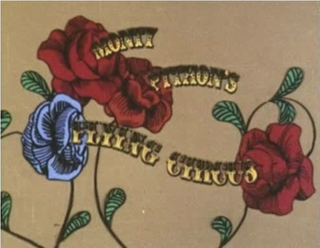
Monty Python's Flying Circus is a British surreal sketch comedy series created by and starring Graham Chapman, John Cleese, Eric Idle, Terry Jones, Michael Palin, and Terry Gilliam, who became known collectively as "Monty Python", or the "Pythons". The first episode was recorded at the BBC on 7 September 1969 and premiered on 5 October on BBC1, with 45 episodes airing over four series from 1969 to 1974, plus two episodes for German TV. A feature film adaptation of several sketches, And Now for Something Completely Different, was released in 1971.
Mark Irwin Forstater is an American film and TV producer, author, audio producer, music producer and tech entrepreneur, notable for producing the classic comedy film Monty Python and the Holy Grail and then in 2012 suing the five living members of Monty Python over a dispute regarding royalties from merchandising income, including the Spamalot musical, which was "lovingly ripped off from" the Holy Grail movie. He is a graduate of London Film School. He has resided in the United Kingdom since 1964.

Monty Python Live (Mostly) (also billed as Monty Python Live (Mostly): One Down, Five to Go) was a variety show by the Monty Python comedy group at The O2 in London in July 2014. Planned as a single performance for 1 July, it was expanded to 10 shows due to the high demand for tickets. It was their first live performance together in 16 years, the second without member Graham Chapman (who died in 1989) and the last with Terry Jones (who died in 2020).

Monty Python's Total Rubbish is a 2014 boxed set collecting remastered editions of the nine original albums of British comedy troupe Monty Python on nine CDs or ten LPs. It was released on 30 June 2014.

Monty Python and the Holy Grail (Book), also known as Mønti Pythøn ik den Hølie Gräilen (Bøk), is the literary companion to the 1975 film of the same name, assembled by co-director Terry Jones.

The Pythons is a BBC documentary film about the Monty Python team which was shot in Tunisia in 1978 during the making of Monty Python's Life of Brian. As well as promoting their upcoming film, the documentary also serves as a tenth anniversary profile of the team, despite the original broadcast date of 20 June 1979 being some months ahead of both the tenth anniversary of their TV debut and the UK release of their new film.
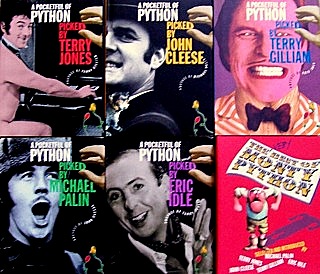
A Pocketful of Python is a series of five books by the Monty Python team, in which each of the surviving members selects their favourite material from the group’s TV series, films, records and books. The first two volumes, by Terry Jones and John Cleese, were released in 1999 as part of the team’s 30th anniversary celebrations. Two further volumes, by Terry Gilliam and Michael Palin, followed in 2000 while the final volume, by Eric Idle, was eventually released in 2002. Each team member’s volume includes a preface written by one of the other Pythons. In 2006 all five volumes were released as a single paperback edition, entitled The Very Best of Monty Python.
